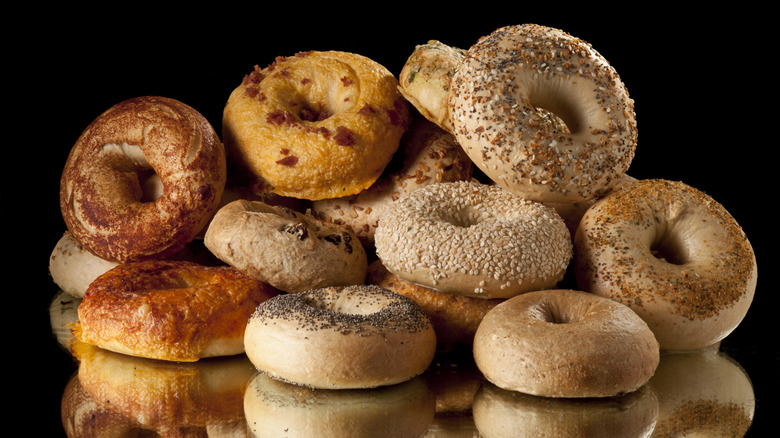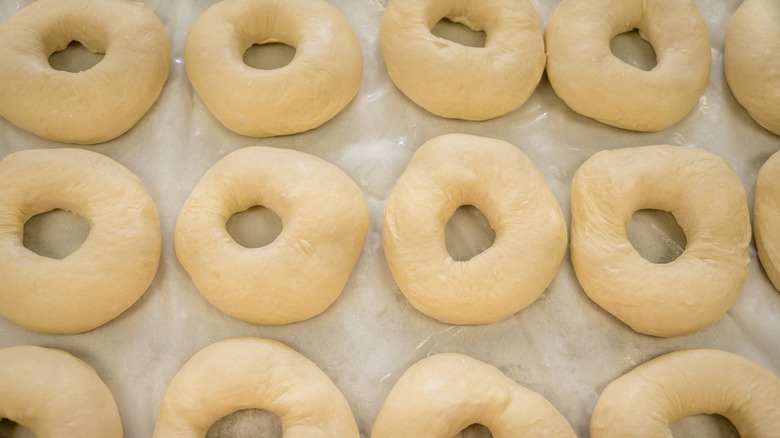Here's How To Avoid Over-Proofing Your Bagels
A good bagel is a lot more than a circle of bread with a hole in the center. A proper bagel has a crackly, chewy-crisp exterior, boiled and then baked until shiny and browned, with a softer yet still dense interior. The fluffy, pale circles available at supermarkets just don't cut it. As an official New Yorker (over 20 years!) and a professional recipe developer, I have spent a lot of time eating and making bagels, and I have learned that besides an amazing local bagel shop, the best bagel is the one you make at home.
Making homemade bagels only requires a few ingredients and time, but the nuance is in the method, and the biggest pitfall is over-proofing the dough. An over-proofed bagel will deflate during the cooking process, leading to a flat bagel with a closed center and tough interior.
There are typically two times a yeasted dough rises. During the first rise, the yeast feeds on the sugar in the flour and emits carbon dioxide. That carbon dioxide is trapped in the dough and causes it to grow and expand. Then, the dough is flattened, shaped, or stretched, and left to proof. Proofing allows the dough to regain some of the air it lost during the shaping process before it is cooked, but not as much as during the first rise. Depending on the recipe, proofing can take place more quickly at room temperature, or slower and longer in the refrigerator.
What to look for in a properly proofed bagel
Over-proofing happens when shaped dough is left too long before cooking. Yeast continues to emit gas that will eventually overpower and weaken the gluten structure and strength of the dough. This will lead to collapsed bagels or loaves of bread with an unpleasant texture. To avoid over-proofing bagels, it's important to know when it's time to boil and bake them. If the bagels proof at room temperature, pay more attention to how the dough looks than the clock since dough will rise faster in warmer temperatures. The bagels will be slightly puffed and spring back slowly when gently poked. If the dough snaps back immediately, give it a little more time. If the dough holds the indentation without filling back in, it's beginning to over-proof and should be cooked immediately or reshaped and reproofed.
Bagel recipes also often call for proofing for several hours or overnight in the refrigerator. The added time allows flavor to develop and deepen. Yeast activity will slow and pause in very cold temperatures, reducing the risk for over-proofing, but it can still happen. Position the bagels in the coldest part of the refrigerator away from the door. The dough will continue to proof until cold, so limiting the exposure to rushes of warm air each time the refrigerator is opened, will keep them from over-proofing by cooling them down faster. Before cooking, check for proper proofing with the poke test to ensure bagel bliss.

